My name is Helena Brady. As a student of Botany, I am delighted to be taking part in the Inclusive Internship Programme of 2024, run by the Trinity disAbilty Service and the Trinity College Botanic Garden. The internship is a unique opportunity to spend time with the subjects that I study, helping to foster further understanding in my chosen field. My role is somewhat unique as I am situated between two sites, the botanic garden and Trinity College Herbarium.

The garden is bustling with all forms of life. Through spending time working in the surroundings, I have noticed many forms of life which inhabit the garden, besides the plants themselves. Working along-side the friendly team at the garden, I have observed many curious organisms including fungi, birds, frogs, insects, and of course, the three resident cats, Fluffy, Missy and Brody!
Much of the duties at the gardens includes general maintenance of the plant collections like pruning, repotting plants and clearing areas to improve the presentation of the gardens. This work provides insights on the interactions between the microhabitats of the gardens and their inhabitants.
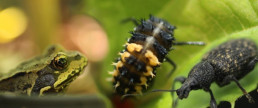
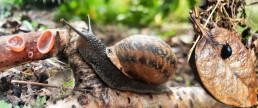
While removing dying garlic foliage in the peaceful shade of the Arboretum, there were many slugs, snails, beetles and even millipedes found living in the cool, damp underlayer.
One day, under the shade of a giant chain fern, (Woodwardia fimbriata) I was clearing detritus and cutting off dead fronds, when I spotted a bee flying around me underneath the canopy. I didn’t think much of it initially until I noticed a buzzing sound emanating from beneath the surface of dead leaves I had been clearing. I quickly realised that I had encountered a wild bee nest. My curiosity was piqued and I attempted to get some pictures to try identify them later as the work day was drawing to a close…
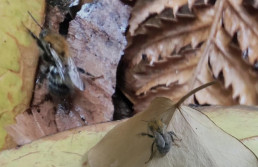
Not wanting to disturb them too much I replaced the leaf litter I had been removing. I later downloaded 2 documents from the National Biodiversity Data Centre which had photographs and brief descriptions of different Irish bees. Unfortunately, the pictures I had taken were too blurry as the bee in question was flying around quite excitedly. So, I waited for an overcast day at the garden where the bees would be more subdued and took a few more pictures.
I managed to get somewhat better photos of one of the bees. After referencing some bumblebee identification guides, I decided that it could likely be Bombus pascuorum, the Common Carder Bee. These were the closest fit visually and also are known to make their nests in leaf litter above ground. Common carder bees are long tongued, so their morphology is suited to feeding on tubular flowers such as heather and lavender. These social bees are important pollinators in our ecosystems.
Nature photography is a hobby of mine and the garden is a great place to practise these skills. I took my camera with me some days to experiment with a macro lens, which gives greater detail to very small subjects. Where better to get up close and personal and capture pictures of strange, wonderful plants than at a botanical garden?
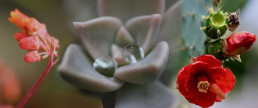
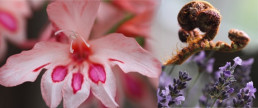
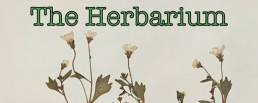
Some specimens that were procured from Trinity College Botanic Gardens are stored in folders found in the cabinets of the Trinity Herbarium. My job at the herbarium is to extract folders that contain cultivated and/or unlocalised specimens (labelled 16).
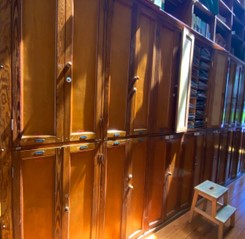
Some of these specimens date back as far as 1820, and provide insights into the plant varieties that existed in the old garden at Ballsbridge, predating the Garden’s move to Dartry in 1967.
As I delicately make my way through the old materials in these folders, I am contributing to the ongoing large-scale digitisation of the Herbarium. The process can be quite time consuming, as deciphering the old, cursive handwriting in Latin can be challenging. Each specimen generally has a label denoting the scientific (derived usually from Latin or Greek) binomial name, as well as other information related to the plant specimen, including location, collector and the date collected. I am finding working through so many plant names helpful in improving my understanding of the way in which scientific names are formed by noticing patterns in the language.
I consult resources such as World Flora Online and International Plant Names Index (IPNI) as well as applying general sleuth detective skills, to determine some of the corresponding species’ names, adding these to a spreadsheet online. I also add barcode stickers to each of the specimens from these folders, taking note of any that suggest relation to the garden.
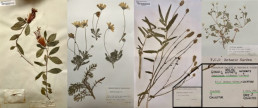
Above picture shows a selection of some specimens. I have catalogued which range in age. It is truly amazing how well preserved the specimens have remained. For example the image on the far left displaying Barnadesia rosea dates back to 1845.
I enjoy the repetitive nature of the tasks at the herbarium as it is quite therapeutic. I took a timelapse to demonstrate visually the type of work I do there which you can watch here – I hope you enjoy it!

